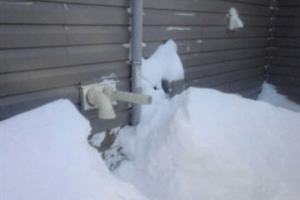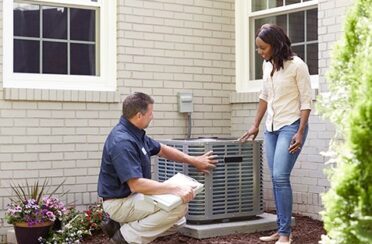 Troubleshooting vents for the home heating system is a common issue during winter months. If you’ve upgraded to a newer, high-efficiency furnace, you probably have a sidewall-vented unit instead of the roof vent that older furnaces utilized.
Troubleshooting vents for the home heating system is a common issue during winter months. If you’ve upgraded to a newer, high-efficiency furnace, you probably have a sidewall-vented unit instead of the roof vent that older furnaces utilized.
A sidewall vent incorporates separate PVC intake and exhaust pipes routed through an exterior wall. One pipe intakes fresh outdoor air for the furnace combustion process; the other pipe exhausts furnace byproducts including small amounts of condensate and cooled fumes. While sidewall vent systems are very safe and facilitate lower operating costs due to improved energy efficiency, troubleshooting vents is sometimes required to deal with specific issues.
Can Snow Block Your Furnace Vent?
A sidewall vent should be installed a minimum of 18 inches above outdoor ground level or above the maximum expected snow level in that locale. Still, drifting snow and/or ice formation may block the exhaust or intake pipe or both. If snow blocks your furnace vent it can cause the furnace to go into safety lockout mode and shut down automatically, as well as compromise proper venting of hazardous furnace byproducts and affect the safety of your indoor air quality. During winter, follow these steps for troubleshooting vents:
-
Remove furnace vent screen
Prepare for the heating season by removing the screens from the furnace vent pipe openings that are typically installed during summer to keep out insects. This prevents blowing snow from obstructing screens. Replace the screens at the end of the winter season.
2. Furnace vent cleaning
Visually inspect and clean the furnace vents at regular intervals throughout the winter to make sure snow, ice or fallen leaves are not obstructing the openings. Clear any obstructions to ensure full intake and exhaust ventilation.
3. Clear ice from the exhaust vent
Even when no snowfall is present, the exhaust vent may still be obstructed by ice as liquid furnace condensate freezes at the end of the pipe. Clear away any visible ice formation.
4. Call an HVAC technician
Ice blockages may also form inside the vent pipe if it is not slanted for adequate drainage and retains some condensate. If unexplained blockage occurs, consult a qualified HVAC service technician immediately to make sure that the pipe is installed correctly for proper condensate flow.
For professional advice about troubleshooting vents, contact Arpi’s Industries.


